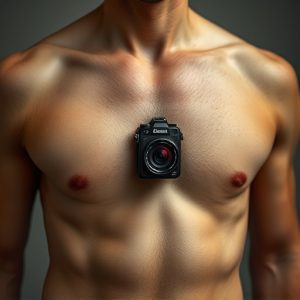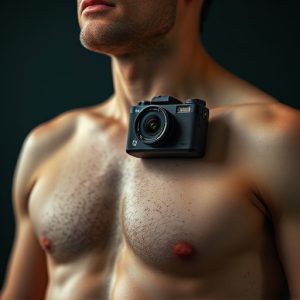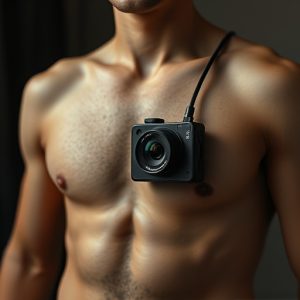Navigating Legal Boundaries and Usage of Hidden Personal Body Cameras
Hidden personal body cameras have become a multifaceted tool for both personal security and professi…….
Hidden personal body cameras have become a multifaceted tool for both personal security and professional accountability. These compact devices, designed to blend into everyday attire, offer high-definition recording capabilities, enabling users to covertly capture their environment. When selecting a model, considerations such as battery life, storage capacity, and image clarity are paramount. Available in various forms like watches, sunglasses, or buttons, these cameras are ideal for discreet monitoring. It's essential to understand the legal implications of recording in public spaces, adhering to laws that protect privacy while avoiding unauthorized surveillance. Advanced features like night vision, motion activation, and two-way audio enhance their functionality. Ethical use is key, ensuring compliance with local and state regulations. These cameras have transformed personal recording technology, offering a subtle way to capture high-quality footage in various lighting conditions, with AI-driven image stabilization for clear recordings. They are particularly useful for law enforcement officers to document interactions, safeguarding workers in hazardous environments, deterring misconduct in urban areas, and capturing personal moments. The evidence they provide is indispensable for resolving disputes, ensuring transparency, and maintaining accountability.
In an era where personal safety and security are paramount, the advent of hidden personal body cameras has emerged as a discreet and effective solution. This article delves into the multifaceted world of these devices, offering readers a thorough understanding of their functionality, legal implications, and practical applications. From the technical aspects of how they operate to the myriad ways they can be utilized for protection or documentation, “Hidden Personal Body Cameras: A Comprehensive Guide” is an essential read for anyone interested in the intersection of technology and personal safety. Uncover the benefits and considerations of using these devices in various scenarios, ensuring you are well-informed about this cutting-edge security innovation.
Understanding Hidden Personal Body Cameras: A Comprehensive Guide
Hidden personal body cameras have become a significant technological tool for various purposes, ranging from personal security to professional accountability. These devices, often small and discreet, are equipped with recording capabilities that can capture events as they unfold without drawing attention. They offer users the ability to document incidents or activities covertly, ensuring that critical moments are preserved for later review. The integration of high-definition video and audio recording into these compact units has significantly improved their effectiveness, making them indispensable for individuals who require an unobtrusive way to record their surroundings.
When considering the acquisition of a hidden personal body camera, it’s crucial to evaluate factors such as battery life, storage capacity, and the quality of the recording. These cameras are designed with stealth in mind, often coming in various forms like watches, sunglasses, or even buttons, allowing users to blend them into their daily attire seamlessly. Additionally, advanced models come equipped with features like night vision, motion activation, and two-way audio communication. Users must also be aware of the legal implications and privacy concerns associated with recording in public spaces. Understanding the operational capabilities, as well as the legal framework within which these devices function, is essential for users to harness their benefits responsibly.
Legal Considerations When Using Hidden Personal Body Cameras
The use of hidden personal body cameras raises a myriad of legal considerations, which are critical for users to understand before deployment. One of the primary issues is privacy; capturing footage in areas where individuals have a reasonable expectation of privacy can lead to legal challenges. Laws differ by jurisdiction, but generally, recording someone without their knowledge may violate wiretapping or surveillance laws. Users must be vigilant about the situations in which they activate these devices to avoid infringing on individuals’ rights to privacy.
Additionally, the legality of using hidden personal body cameras is often contingent upon the context and consent of all parties involved. In public spaces where privacy expectations are lower, their use may be permissible. However, in sensitive contexts such as changing rooms, bathrooms, or private homes, even in public areas, their use could be subject to legal scrutiny. It is imperative for users to familiarize themselves with state and local laws as they vary significantly. Compliance with these regulations is not only a legal obligation but also crucial for the credibility and acceptance of evidence captured by such devices in both civil and criminal proceedings. Users should also consider data protection laws, which dictate how recorded information can be stored, used, and shared, ensuring that the privacy of individuals, including themselves, is safeguarded at all times. Understanding these legal intricacies is essential for anyone considering the use of hidden personal body cameras to ensure they are used responsibly and legally.
The Technology Behind Hidden Personal Body Cameras: How They Work
Hidden personal body cameras have become a significant technological innovation, offering individuals a discreet means to record their interactions and environments. These devices are designed with miniaturized components and sophisticated software that enable them to blend seamlessly into everyday wear. The technology behind these cameras involves advanced optics that can capture high-quality video without drawing attention. They often feature wide dynamic range sensors capable of recording clear footage in a variety of lighting conditions, from dimly lit spaces to bright daylight environments.
The integration of AI algorithms allows for real-time analysis and processing of the visual data, ensuring that the footage is stable and focused, even when the wearer is moving. These cameras are equipped with motion detection and audio capture capabilities, which can activate the recording function automatically upon sensing an event. This proactive approach to recording ensures that users do not miss crucial moments while maintaining a natural interaction with their surroundings. Additionally, these devices are often paired with secure storage options, either internally with large capacities or through cloud-based services, providing peace of mind for the data’s safety and accessibility. The privacy-conscious design, combined with the latest in image stabilization and battery efficiency, makes hidden personal body cameras a powerful tool for individuals seeking to document their experiences or enhance personal security.
Practical Applications and Use Cases for Hidden Personal Body Cameras
Hidden personal body cameras have garnered significant attention as a tool for enhancing personal safety and documenting events with an unbiased perspective. These devices can be covertly integrated into clothing or accessories, allowing individuals to record interactions without drawing attention to the recording process. One practical application is in law enforcement, where officers may use such cameras to capture interactions with civilians from a first-person viewpoint, providing valuable insights and evidence in sensitive situations. This can serve as a deterrent to misconduct and offer protection for both law enforcement personnel and the public.
In civilian contexts, hidden personal body cameras are particularly useful for individuals who work in high-risk environments, such as journalists operating in volatile regions or private security personnel patrolling high-value properties. They also provide an additional layer of security for pedestrians in urban areas where crime rates may be higher. Additionally, these devices can be a valuable resource for personal documentation, capturing life events from a unique vantage point, and offering peace of mind during solo activities or travel. The footage collected by hidden cameras can be crucial in resolving disputes, providing corroborative evidence, and ensuring accountability in various scenarios.


